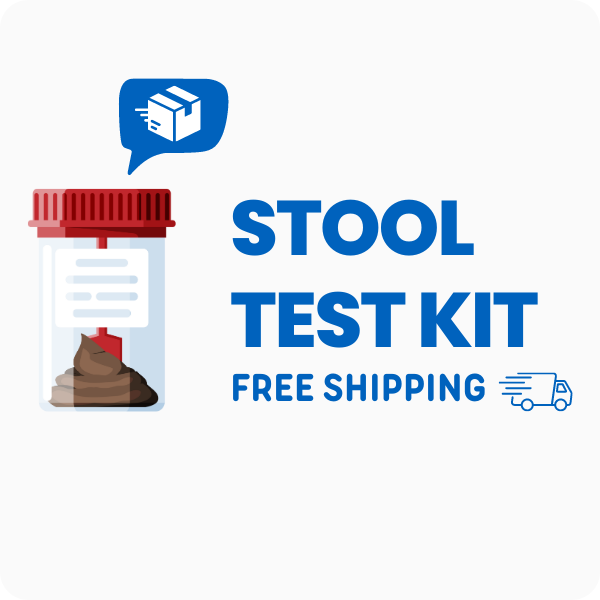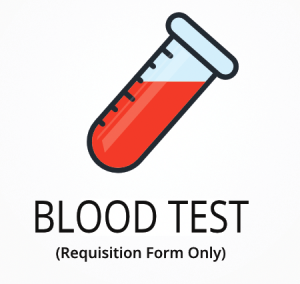Ordering the DNA Stool Test | Microbial Ecology Profile (Gut Bacterial Analysis)
The DNA Stool Test | Microbial Ecology Profile (Gut Bacterial Analysis) helps identify the types and balance of bacteria, yeast, and parasites in your digestive system. This test can show if there are too many or too few helpful or harmful bacteria, which may be linked to symptoms like bloating, constipation, diarrhea, or stomach pain. Interestingly, this test can also detect certain bacteria that help break down oxalates, which are found in some foods and can affect kidney stone risk.
Ordering this test gives you a detailed report about your gut bacteria, yeast, and parasites, helping you and your doctor make decisions about diet, probiotics, or other treatments. When ordering, you can expect these specific benefits:
- Shows the balance of good and bad gut bacteria, including Bifidobacterium and Lactobacillus.
- Detects yeast like Candida and parasites such as Giardia and Cryptosporidium.
- Includes drug sensitivity testing for certain bacteria and yeast, guiding treatment choices.
- Identifies bacteria that may affect digestion of fiber and plant foods.
- Provides a clear report that can be used to track changes over time.
Who Should Consider Gut Bacteria Balance Testing
People who have ongoing digestive problems, such as frequent gas, loose stools, or constipation, may benefit from this test. For example, someone who has tried changing their diet and using probiotics but still feels discomfort after meals could use this test to find out if an imbalance in gut bacteria is the cause.
Ordering this test may also be helpful in these situations:
- Someone with unexplained stomach pain that does not improve with common treatments.
- People who have taken antibiotics recently and want to check if their gut bacteria have changed.
- Those with skin issues like eczema or rashes that may be linked to gut health.
- People with a family history of digestive disorders who want to check their gut bacteria early.
- Someone who has frequent urinary tract infections, as certain gut bacteria can play a role in these infections.
This test can help you find out if your gut bacteria, yeast, or parasites are out of balance, which may be causing your symptoms. Delaying this test could mean missing the chance to address a problem early, which might make symptoms last longer or become harder to manage.
Preparing for Microbial Ecology Profile Analysis
Fasting is not required for this test, but you may need to avoid certain foods or supplements before collecting your sample, so check your instructions carefully. Always follow the directions given by your doctor or healthcare provider to make sure your sample is collected the right way and your results are useful.
Labs Included When Ordering Your DNA Stool Test | Microbial Ecology Profile (Gut Bacterial Analysis)
| Test Name | Reference Range | Significance | Low and High Levels of DNA Stool Test | Microbial Ecology Profile (Gut Bacterial Analysis) |
|---|---|---|---|
| Good Gut Bacteria (Commensal/Opportunistic) | |||
| Bacteroidetes Phylum (Bacteroides-Prevotella group, Bacteroides vulgatus, Barnesiella spp., Odoribacter spp., Prevotella spp.) | 108–1011 CFU/g | These bacteria help break down plant fibers and produce short-chain fatty acids that support gut lining and regular bowel movements. They are important for keeping harmful bacteria in check. |
High levels mean there may be too much fermentation, which can cause gas or loose stools.
Low levels mean less fiber breakdown and possible constipation or poor nutrient absorption. |
| Firmicutes Phylum (Anaerotruncus colihominis, Butyrivibrio crossotus, Clostridium spp., Coprococcus eutactus, Faecalibacterium prausnitzii, Lactobacillus spp., Pseudoflavonifractor spp., Roseburia spp., Ruminococcus spp., Veillonella spp.) | 108–1011 CFU/g | Firmicutes help digest complex carbohydrates and produce butyrate, which supports colon health and reduces inflammation. They also help balance other gut bacteria. |
High levels mean possible weight gain or increased calorie extraction from food.
Low levels mean less butyrate production and possible gut inflammation. |
| Actinobacteria Phylum (Bifidobacterium spp., Bifidobacterium longum, Collinsella aerofaciens) | 107–1010 CFU/g | These bacteria help digest fiber, support the immune system, and keep harmful bacteria from growing. They are often found in probiotic supplements. |
High levels mean possible overgrowth, which can cause gas or bloating.
Low levels mean weaker defense against harmful bacteria and less fiber digestion. |
| Proteobacteria Phylum (Desulfovibrio piger, Escherichia coli, Oxalobacter formigenes) | 106–108 CFU/g | Some Proteobacteria help break down oxalates and support gut health, but high levels can be linked to inflammation or infection. |
High levels mean possible infection or inflammation in the gut.
Low levels mean less oxalate breakdown and possible risk for kidney stones. |
| Euryarchaeota Phylum (Methanobrevibacter smithii) | 106–108 CFU/g | This microbe helps remove hydrogen gas in the gut, which can affect how quickly food moves through the intestines. |
High levels mean slower bowel movements and possible constipation.
Low levels mean faster transit time and possible diarrhea. |
| Fusobacteria Phylum (Fusobacterium spp.) | 105–107 CFU/g | Fusobacteria are usually present in small amounts and can be linked to inflammation if levels are high. |
High levels mean possible inflammation or infection.
Low levels mean normal or no concern. |
| Verrucomicrobia Phylum (Akkermansia muciniphila) | 106–108 CFU/g | Akkermansia helps maintain the gut lining and may support a healthy weight and blood sugar balance. |
High levels mean possible thinning of the gut lining.
Low levels mean weaker gut barrier and possible inflammation. |
| Bacteria (Culture) | |||
| Lactobacillus spp. | 106–109 CFU/g | Lactobacillus helps digest lactose and supports the immune system. It is often found in yogurt and probiotics. |
High levels mean possible overgrowth, which can cause gas or bloating.
Low levels mean less support for digestion and immune function. |
| Escherichia coli | 106–108 CFU/g | Most E. coli strains are harmless and help with digestion, but some can cause infection if levels are too high. |
High levels mean possible infection or diarrhea.
Low levels mean normal or no concern. |
| Bifidobacterium | 107–1010 CFU/g | Bifidobacterium helps digest fiber and supports the immune system. It is a common probiotic. |
High levels mean possible overgrowth, which can cause gas or bloating.
Low levels mean less fiber digestion and weaker defense against harmful bacteria. |
| Additional Bacteria | |||
| Alpha haemolytic Streptococcus, Citrobacter freundii, Klebsiella oxytoca, Gamma haemolytic Streptococcus, Pseudomonas aeruginosa | Not detected or <104 CFU/g | These bacteria can be harmless in small amounts but may cause infection or inflammation if present in high numbers. |
High levels mean possible infection or inflammation.
Low levels mean normal or no concern. |
| Mycology | |||
| Candida kruseii | Not detected | Candida is a type of yeast that can cause symptoms like bloating, gas, or diarrhea if it grows too much in the gut. |
High levels mean possible yeast overgrowth and digestive symptoms.
Low levels mean normal or no concern. |
| Parasitology | |||
| Cryptosporidium, Giardia lamblia, Entamoeba histolytica | Not detected | These parasites can cause diarrhea, stomach pain, and other digestive problems if present in the gut. |
High levels mean possible infection and digestive symptoms.
Low levels mean normal or no concern. |
| Bacteria Drug Sensitivity Testing | |||
| Pseudomonas aeruginosa, Klebsiella oxytoca, Citrobacter freundii (Prescriptive Agents: Ciprofloxacin, Tetracycline, Trimethoprim/Sulfa, Ampicillin, Amox./Clavulanic Acid, Cephalothin; Natural Agents: Berberine, Oregano, Plant Tannins, Uva-Ursi) | Sensitive/Resistant | Shows which antibiotics or natural agents may work best if these bacteria are found in high numbers, helping guide treatment choices. |
High levels mean possible infection needing targeted treatment.
Low levels mean normal or no concern. |
| Candida kruseii (Azole Antifungals: Fluconazole, Voriconazole; Non-absorbed Antifungals: Nystatin; Natural Agents: Berberine, Caprylic Acid, Garlic, Undecylenic Acid, Plant tannins, Uva-Ursi) | Sensitive/Resistant | Shows which antifungal medicines or natural agents may work best if Candida is found, helping guide treatment choices. |
High levels mean possible yeast overgrowth needing targeted treatment.
Low levels mean normal or no concern. |
Reference ranges may change slightly as labs update their methods or as new research becomes available. Always check your report for the most current reference values.
DNA Stool Test | Microbial Ecology Profile FAQ
Is there DNA Stool Test | Microbial Ecology Profile testing near me?
This is a home test kit, so you can collect your sample at home and send it to the lab using the prepaid shipping label. If you have ongoing digestive symptoms like bloating or diarrhea, being able to collect your sample at home means you don’t have to travel or wait for an appointment, making it easier to get answers quickly.
How do I interpret the test results?
While your treating doctor should review your results, you can also use our one-on-one test results review service with our clinical team for a detailed explanation and next steps.
What is the cost of the test?
The price you see for the test includes standard shipping to your address and return shipping to the lab, but local draw fees may apply. Ordering this test can help you find out if gut bacteria or yeast are causing your symptoms, so you can start the right treatment sooner.
How often should I retest?
It’s best to retest every 3 to 6 months, especially if you are making changes to your diet, using probiotics, or treating an infection, so you can track your progress and see if your gut bacteria are improving.
How accurate is the test?
This test uses DNA-based PCR (polymerase chain reaction) technology to detect and measure bacteria, yeast, and parasites in your stool sample, with a specificity of 98% and sensitivity of 97%. TrueHealthLabs.com partners with CLIA-certified and CAP-certified laboratories to uphold rigorous testing standards for dependable results.
Important Notes
- Bacteriology, Mycology, and Parasitology: Only positive results will show on report. If not detected, results will not show.
Medical Review Board
Reviewed by Jeff Donohue M.D. from Body Logic and Brady Hurst DC, CCCN. Written by True Health Lab’s team of editorial health contributors.
Disclaimer: This information is for educational purposes only and not intended as medical advice. Consult your healthcare provider for personalized guidance.
Why Customers Trust True Health Labs – What People are saying
Also rated 4.6 out of 5 based on 3452 ShopperApproved reviews- See all TrueHealthLabs.com reviews.









